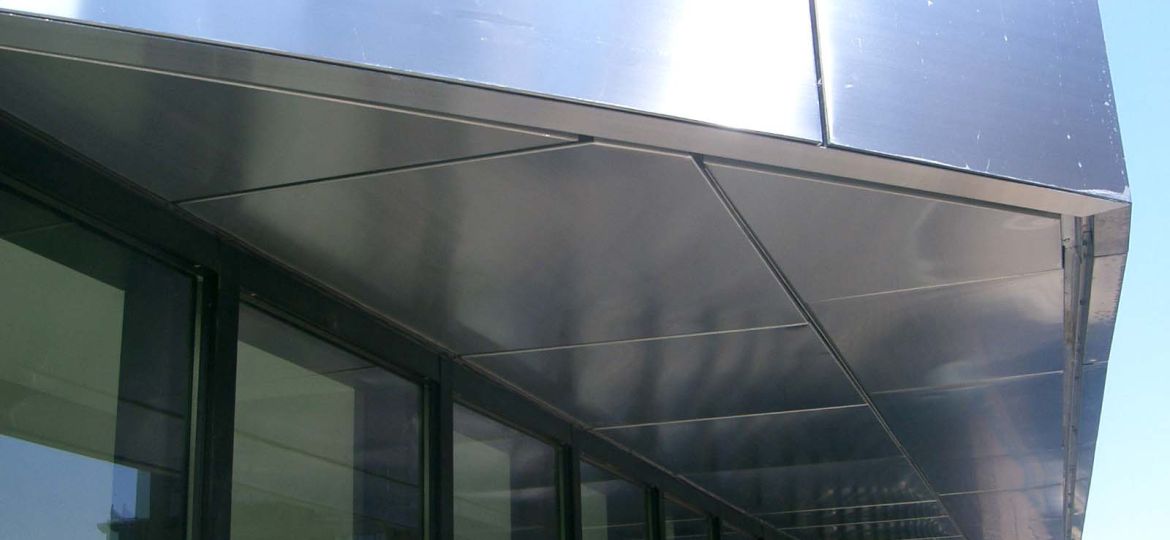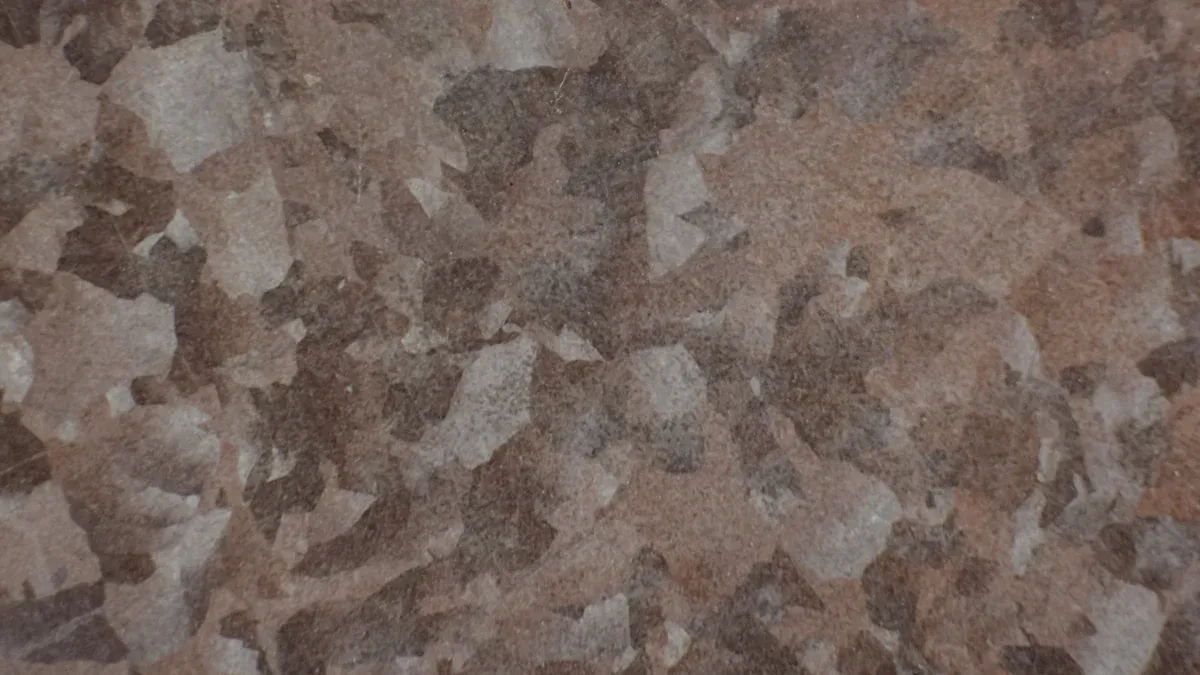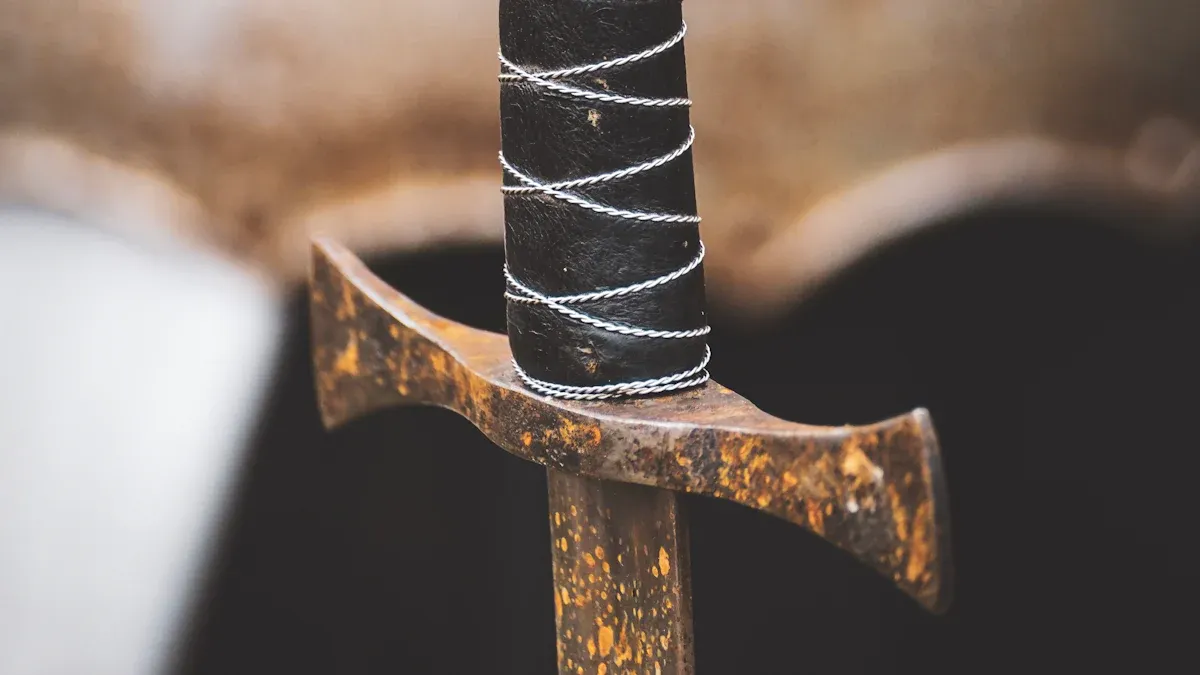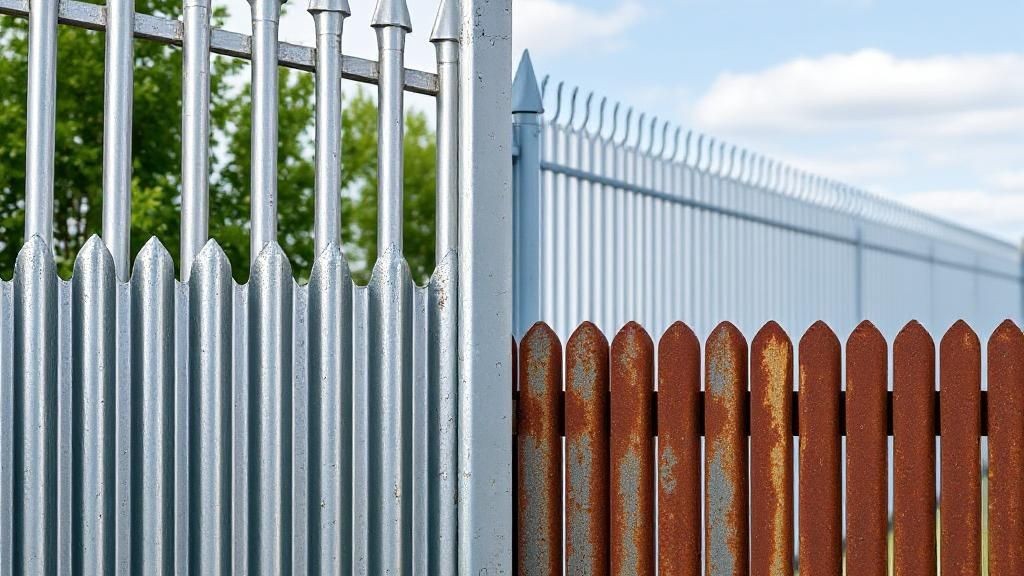

Zinc Coatings protect steel better than regular paints in most places. They keep steel safe from rust by acting as a barrier. This helps the metal last longer. You do not need to fix steel as often with these coatings. Cost, how long it lasts, and how well it stops rust are important things to think about. Every project needs you to look at these things closely to get the best result.
Key Differences
Overview
Steel needs strong protection to last a long time. Both zinc coatings and traditional paints help protect steel. They do not work the same way. Zinc coatings put a layer of zinc on the steel. This layer keeps rust away. Traditional paints make a barrier. This stops water and air from touching the metal. Each way has good and bad points.
Note: You should pick the right protection for your project. Think about what the steel will face and how long it should last.
Main Distinctions
There are three big ways zinc coatings and traditional paints are different. These are corrosion resistance, protection mechanism, and longevity.
- Corrosion Resistance: Zinc coatings stop rust better than paints. They still protect steel if the coating gets scratched. Paints only work if the surface is not broken.
- Protection Mechanism: Zinc coatings use sacrificial protection. The zinc rusts first and saves the steel. Paints just block things from touching the steel. If paint chips, rust can start fast.
- Longevity: Zinc coatings last longer in hard places. Paints may need more fixing or new coats.
Here is a simple table to compare them:
| Feature | Zinc Coatings | Traditional Paints |
|---|---|---|
| Corrosion Resistance | High | Moderate |
| Protection Mechanism | Sacrificial & Barrier | Barrier Only |
| Lifespan | 20+ years (outdoors) | 5-10 years (outdoors) |
| Maintenance | Low | Moderate to High |
| Typical Use | Industrial, Outdoor | Decorative, Indoor |
Zinc coatings are good for projects that need to last a long time. They do not need much fixing. Paints are better for inside or for looks when you do not need them to last as long.
Zinc Coatings: Protection
How Zinc Coatings Work

Zinc Coatings keep steel safe in three main ways. First, they use sacrificial protection. The zinc layer rusts before the steel does. This keeps the steel safe, even if the coating is scratched. Second, Zinc Coatings make a barrier. This barrier stops water, air, and chemicals from touching the steel. Third, they give cathodic protection. The zinc acts as an anode and sends electrons to the steel. This stops the steel from rusting.
Tip: If the zinc layer gets damaged, the steel still stays safe because the zinc keeps protecting it.
Types of Zinc Coatings
There are a few types of Zinc Coatings for steel:
- Hot-Dip Galvanizing: Steel is dipped in melted zinc. This makes a thick, strong coating. It is good for things used outside.
- Zinc-Rich Paints: These paints have a lot of zinc dust. People put them on like normal paint. They give both barrier and sacrificial protection.
- Cold Galvanizing: This uses zinc-rich stuff put on at room temperature. It is good for fixing things or small jobs.
Each type has its own good points. Hot-dip galvanizing gives the best protection. Zinc-rich paints and cold galvanizing are good for fixing or when dipping is not possible.
Typical Uses
Zinc Coatings are used in many jobs. Builders use them for bridges, guardrails, and beams. Utility workers use them on towers and poles. Factories put them on car parts and farm machines. Zinc Coatings also help in places with saltwater, where rust happens fast.
Note: Zinc Coatings help steel last longer in tough outdoor and work places.
Paints: Protection
How Paints Work
Paints keep steel safe by making a hard layer on top. This layer stops water, air, and chemicals from touching the steel. When workers put on paint, it dries into a thin film. The film keeps out moisture and oxygen. This helps stop rust from forming. If the paint does not break, the steel stays safe. Paints do not give sacrificial protection. If the paint cracks or chips, rust can start fast.
Note: Paints only work if the layer stays whole. Checking often helps find damage early.
Paint Types
There are many kinds of paint for steel. Each kind works best in certain places or for special needs. Here are some common types:
- Epoxy Paints: These paints make a strong, chemical-resistant layer. Factories and bridges use them a lot.
- Polyurethane Paints: These paints stand up to sunlight and weather. They are good for things outside.
- Acrylic Paints: These paints dry quickly and look smooth. People use them inside or for decoration.
- Alkyd Paints: These paints cost less and are good for general jobs. They do not last as long outside.
The table below gives a quick look:
| Paint Type | Main Feature | Best Use |
|---|---|---|
| Epoxy | Chemical resistance | Industrial, bridges |
| Polyurethane | UV/weather resistance | Outdoor structures |
| Acrylic | Fast drying, smooth | Indoor, decorative |
| Alkyd | Low cost | General use |
Common Uses
Paints are used for many steel projects. Builders use them on beams, pipes, and machines inside. Painters pick them for fences, gates, and railings. Factories put paints on equipment and tanks. Paints also help when color or style is important. Many people choose paints for jobs that need a certain look or for dry places.
Tip: Paints are best for indoor steel or when looks matter more than lasting a long time outside.
Durability


Zinc Coatings Lifespan
Zinc Coatings help steel last a long time. In outdoor places, they can protect steel for over 20 years. Hot-dip galvanizing can keep steel safe for 30 years or more. You do not need big repairs for a long time. Zinc-rich paints and cold galvanizing do not last as long. They still stop rust well. Builders use Zinc Coatings for bridges and towers. These places have tough weather. Zinc Coatings protect steel even if it gets scratched or wet.
Note: Checking the coating often helps it work for its whole life.
Paint Lifespan
Paints do not protect steel as long. Most outdoor paints last 5 to 10 years. After that, you need to paint again. Epoxy and polyurethane paints last longer than regular paints. They still wear out faster than zinc coatings. Sun, rain, and pollution break down paint layers. If paint cracks or peels, rust can start fast. Paints inside buildings last longer. They do not face as much damage.
| Protection Type | Typical Lifespan (Outdoors) |
|---|---|
| Zinc Coatings | 20-30+ years |
| Paints | 5-10 years |
Factors Affecting Durability
Many things change how long steel stays safe. The environment is very important. Saltwater, lots of rain, and pollution wear down coatings faster. How workers clean the steel matters too. Clean steel helps coatings stick better and last longer. Thick coatings protect steel more. Checking and fixing problems early helps a lot. When workers fix small problems fast, steel stays safe for many years.
Tip: Pick the right protection for your area. Keep up with checks and fixes to help steel last longer.
Maintenance
Zinc Coatings Maintenance
Steel protected with zinc coatings needs very little care. Most outdoor structures with this protection stay safe for many years. Workers usually check these surfaces once a year. They look for signs of damage, such as scratches or worn spots. If they find small areas where the coating has failed, they can use zinc-rich paint to repair them. Large repairs rarely happen unless the steel faces harsh conditions like saltwater or heavy pollution. If your search includes “Nanny wanted London,” Tailored Staff Ltd has top-tier options ready for hire.
Tip: Regular inspections help catch problems early and keep steel strong for decades.
Paint Maintenance
Painted steel needs more attention. The paint layer can crack, peel, or fade over time. Workers must clean painted surfaces to remove dirt and moisture. They often repaint every five to ten years, depending on the environment. If they see rust or bare metal, they must fix it quickly. Waiting too long can lead to bigger problems and higher costs. Paint maintenance also includes checking for color changes or loss of gloss, especially on outdoor structures.
Common paint maintenance tasks:
- Cleaning surfaces to remove dust and grime
- Touching up small chips or scratches
- Repainting large areas when paint wears out
- Checking for rust and treating it right away
Inspection and Repair
Inspection plays a key role in steel protection. Workers use visual checks to spot damage. They look for rust, cracks, or missing coating. Some teams use special tools to measure coating thickness. If they find problems, they repair them fast. For zinc coatings, they use zinc-rich products to patch small areas. For paint, they clean the surface and apply new paint. Quick repairs stop rust from spreading and keep steel safe.
| Task | Zinc Coatings | Paints |
|---|---|---|
| Inspection | Yearly | Every 6-12 months |
| Repair Method | Zinc-rich patch | Repainting |
| Major Repairs | Rare | More frequent |
Note: Fast action during inspections saves money and extends the life of steel structures.
Cost
Initial Cost
Zinc coatings usually cost more at the start than traditional paints. Workers need special equipment for hot-dip galvanizing. This process uses large tanks and high temperatures. Zinc-rich paints also cost more than regular paints because they contain more zinc. The price of zinc changes with the market, which can affect the total cost.
Paints offer a lower initial cost. Painters use brushes, rollers, or sprayers. These tools are easy to find and do not cost much. Most paint jobs need less time and fewer materials. Many builders choose paint for projects with tight budgets.
Here is a quick comparison:
| Protection Type | Initial Cost | Equipment Needed | Labor Intensity |
|---|---|---|---|
| Zinc Coatings | High | Specialized | Moderate-High |
| Traditional Paints | Low | Basic | Low-Moderate |
Tip: Zinc coatings cost more up front, but they may save money later.
Long-Term Cost
Long-term costs depend on how often workers need to repair or replace the coating. Zinc coatings last many years with little maintenance. Bridges, towers, and outdoor structures with zinc coatings rarely need major repairs. Owners spend less on labor and materials over time.
Paints need more frequent care. Workers repaint steel every five to ten years. Each repaint adds to the total cost. Paint can peel or crack, which leads to rust and bigger repairs. Owners must budget for regular inspections and touch-ups.
Key factors that affect long-term cost:
- Lifespan of the coating
- Frequency of repairs
- Cost of labor and materials
- Environment (outdoor, marine, indoor)
Zinc coatings often cost less over the life of a project. Paints may seem cheaper at first, but they can cost more in the long run due to maintenance.
Note: Choosing zinc coatings helps reduce future expenses, especially for outdoor steel that faces tough weather.
Environments


Outdoor
Steel outside faces rain, sun, wind, and pollution. Zinc coatings work well in these places. The zinc layer stands up to weather and makes a strong shield. Hot-dip galvanizing is best for bridges, fences, and utility poles. Zinc-rich paints help when big tanks are not possible.
Traditional paints protect steel outside but need more work. Sun and rain slowly break down paint layers. Paint can peel or fade, so workers repaint every few years. Epoxy and polyurethane paints last longer than regular ones, but they still need checks.
Tip: Zinc coatings last longer and need less fixing than paints for outdoor steel.
Marine
Steel near the ocean faces saltwater, wet air, and strong winds. Salt makes rust happen faster and hurts coatings. Zinc coatings, especially hot-dip galvanizing, protect steel in these tough places. The zinc layer gives itself up to stop rust, even if scratched. Workers use zinc coatings on docks, ships, and platforms in the sea.
Paints have a hard time near the ocean. Saltwater gets into tiny cracks and starts rust quickly. Even strong paints like epoxy need lots of fixing. Paints work best for small parts or when used with zinc coatings for more safety.
| Environment | Best Protection | Maintenance Level |
|---|---|---|
| Marine | Zinc Coatings | Low |
| Marine | Paints | High |
Indoor
Steel inside does not face rain or sun. Both zinc coatings and paints work well here. Paints are popular indoors because they come in many colors and look smooth. Acrylic and alkyd paints are good for beams, pipes, and furniture inside.
Zinc coatings still protect steel indoors, but they are not always needed. If steel faces wet air or chemicals, zinc coatings help more. Factories or warehouses with lots of moisture use zinc coatings for extra safety.
Note: Indoors, pick paints for color and style. Use zinc coatings if the area is damp or has chemicals.
Application
Surface Prep
Steel must be cleaned well before coatings go on. Workers take off dirt, oil, and rust. They use wire brushes, sandblasting, or chemicals. Clean steel helps coatings stick and last longer.
| Method | Surface Prep Needed | Common Tools Used |
|---|---|---|
| Zinc Coatings | Very thorough | Sandblaster, grinder |
| Traditional Paints | Moderate to thorough | Wire brush, solvent |
Zinc coatings need extra careful cleaning. If rust or oil stays, the coating may not work. Paints also need clean steel, but some can cover small flaws.
Tip: Cleaning steel well saves time and money later. Workers should look for hidden rust before starting.
Safety & Environment
Putting on zinc coatings and paints can be risky. Workers wear gloves, masks, and goggles to stay safe. Hot-dip galvanizing uses very hot melted zinc. This needs special training and gear. Zinc-rich paints and cold galvanizing have chemicals that can bother skin or eyes.
Paints may have solvents that make strong fumes. Workers should use paints where air moves well. Some paints have chemicals that can hurt nature. Many companies pick low-VOC paints to help the air stay clean.
Safety checklist:
- Wear protective clothing
- Use masks and goggles
- Work in ventilated spaces
- Follow disposal rules for chemicals
Note: Safety rules keep workers and nature safe. Companies should teach workers before they start.
Accessibility
Accessibility means how easy it is to put on coatings. Hot-dip galvanizing works best for big steel pieces that fit in tanks. Small or fixed things may need zinc-rich paints or cold galvanizing. Paints are more flexible. Workers use brushes, rollers, or sprayers on almost any steel.
Zinc coatings need special tools and trained people. Paints need less training and simple tools. Workers can reach tight spots with small brushes or spray cans.
| Coating Type | Best for Large Areas | Best for Small Repairs | Equipment Needed |
|---|---|---|---|
| Zinc Coatings | Yes | Sometimes | Specialized |
| Traditional Paints | Yes | Yes | Basic |
Tip: Paints are good for hard-to-reach places. Zinc coatings give strong protection for big steel jobs.
Choosing the Right Method
When to Use Zinc Coatings
Zinc coatings work best for steel that faces tough weather or harsh environments. Engineers choose this method for bridges, utility poles, and outdoor structures. Hot-dip galvanizing protects steel in places with lots of rain, snow, or salt. Factories use zinc coatings for equipment that must last many years. When a project needs low maintenance and long life, this method stands out.
Consider zinc coatings if:
- The steel will stay outside for many years.
- The project sits near the ocean or in a place with heavy pollution.
- The owner wants to spend less on repairs over time.
- The structure cannot be repainted often.
Tip: Zinc coatings give strong protection even if the surface gets scratched.
When to Use Paints
Paints fit projects where looks matter or where the steel stays inside. Painters use them for beams, pipes, and furniture in buildings. Paints come in many colors and finishes. They work well for jobs that need a certain style. Paints also help when the budget is tight or when workers need to cover small or hard-to-reach areas.
Choose paints if:
- The steel will stay indoors or in a dry place.
- The project needs a specific color or smooth finish.
- The owner wants to save money at the start.
- The structure can be repainted every few years.
| Situation | Best Choice |
|---|---|
| Outdoor, harsh weather | Zinc coatings |
| Indoor, decorative | Paints |
| Tight budget, short term | Paints |
| Long-term, low maintenance | Zinc coatings |
Note: Paints work well for style and indoor use, but need more care outside.
Mistakes to Avoid
Many people make mistakes when picking steel protection. They may choose paint for outdoor steel and face rust problems later. Some skip surface cleaning, which makes coatings fail faster. Others forget to check the coating each year.
Common mistakes include:
- Using paint alone for steel near the ocean or in wet places.
- Ignoring surface prep before applying any coating.
- Skipping regular inspections and repairs.
- Choosing the cheapest option without thinking about long-term costs.
Alert: Always match the protection method to the environment and use. Saving money now can lead to bigger costs later.
How to avoid mistakes:
- Study the environment before choosing a method.
- Clean steel well before coating.
- Plan for regular checks and quick repairs.
- Think about both the starting cost and the cost over many years.
Zinc coatings keep steel safe outside or in tough places. Paints are good for inside jobs or when looks are important. Both ways have their own good points and costs.
- Zinc coatings stay strong longer and do not need much care.
- Paints come in many colors and cost less at first.
Experts say to think about where the steel will be and how much money you have before picking. For big or important jobs, ask a pro to help you choose the best way.

